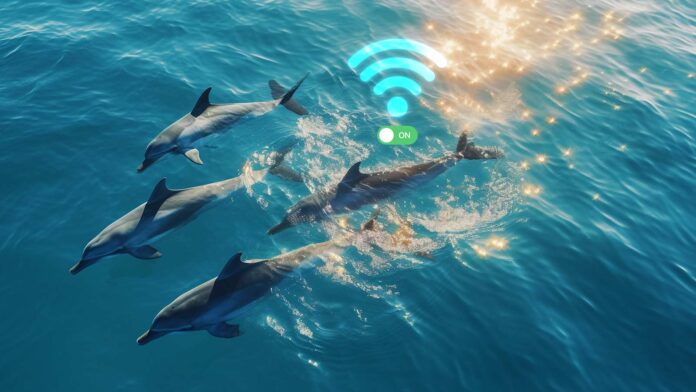Have you ever wondered how a pod of sperm whales behaves in the vast Atlantic? What about the elusive Himalayan predator, the snow leopard – what is it up to throughout the day? And just how fast are the glaciers in the Himalayas shifting? These are the questions that scientists are hoping to answer soon, thanks to a groundbreaking new concept known as the “Internet of Animals,” brought to life through the ICARUS project. The ICARUS project, which stands for International Cooperation for Animal Research Using Space, is a program that aims to preserve biodiversity by utilizing technologies that will provide real-time insights into the functioning of ecosystems.
Exploring the Internet of Animals
The term “Internet of Animals” was coined by Martin Wikelski, a lead scientist at the Max Planck Institute for Animal Behavior (MPI-AB). As a German ornithologist, Wikelski envisioned a global network of transmitters connected via satellite – a system that mirrors the Internet of Things (IoT) but is specifically tailored to monitor Earth’s wildlife and ecosystems. He believes that the Internet of Animals has the potential to be as revolutionary as the decoding of DNA has been for human biology.
Wikelski provides numerous examples of how this emerging technology is already transforming our understanding of wildlife. For instance, a receiver activated in 2020 on the Russian module of the International Space Station (ISS) helped researchers gain valuable insights into land birds like plovers. These birds embark on oceanic migrations spanning thousands of miles, adjusting their routes based on air currents.
Wikelski takes things a step further by suggesting that the technology he has developed could potentially shed light on the mysterious “sixth sense” exhibited by some species when detecting impending earthquakes. All of these advancements will be made possible through the ambitious ICARUS project.
A Fresh Perspective on Understanding Ecological Complexity
After facing a disruption in data supply from the ISS due to the conflict in Ukraine, the ICARUS project, led by the Max Planck Institute, shifted its focus to utilizing satellite-based receivers. By 2025, a network of five low-cost CubeSat microsatellites is expected to be in orbit, gathering data from ultra-light, solar-powered sensors – some weighing as little as a paperclip. These sensors will provide information on each animal’s energy expenditure, as well as environmental factors like atmospheric pressure, altitude, and temperature.
Placing these sensors on various animal species will enable scientists to analyze the real-time behavior of thousands of creatures from any laboratory with the assistance of artificial intelligence. Previously, sensor data was only accessible hours or days later.
In addition to monitoring animals such as birds, whales, and elephants, the sensors can also be placed on glaciers or even floating debris in the ocean, offering valuable insights into environmental processes.
A key element contributing to the success of the project lies in cross-referencing data. Sensor information will be linked to meteorological, seismic, and oceanic data, and can also be compared with satellite images showing vegetation indices, such as NDVI. Ultimately, this approach will provide a comprehensive understanding of the intricate interactions within ecosystems.
Applications of the Project
Given the abundance of data that will be generated, it is evident that the project will offer researchers precious insights into the well-being of various species and the ecological hurdles they encounter. However, this is just one facet of the Internet of Animals.
The saying “canary in a coal mine,” which alludes to using birds to detect hazardous gas levels in mines, holds particular significance here. Researchers believe that this system will not only aid in monitoring wildlife behavior for conservation purposes but will also facilitate the monitoring of climate events or the prediction of natural disasters such as volcanic eruptions or earthquakes by identifying unusual patterns, such as sudden mass animal movements.
The data produced by this project will be accessible to any interested researcher. This technological innovation is anticipated to simplify the monitoring of lesser-known species and enable cost-effective, data-rich research studies.
If you are keen on discovering more about technologies contributing to sustainability across various domains like construction or energy, consider subscribing to our newsletter at the bottom of this page.
Source:




